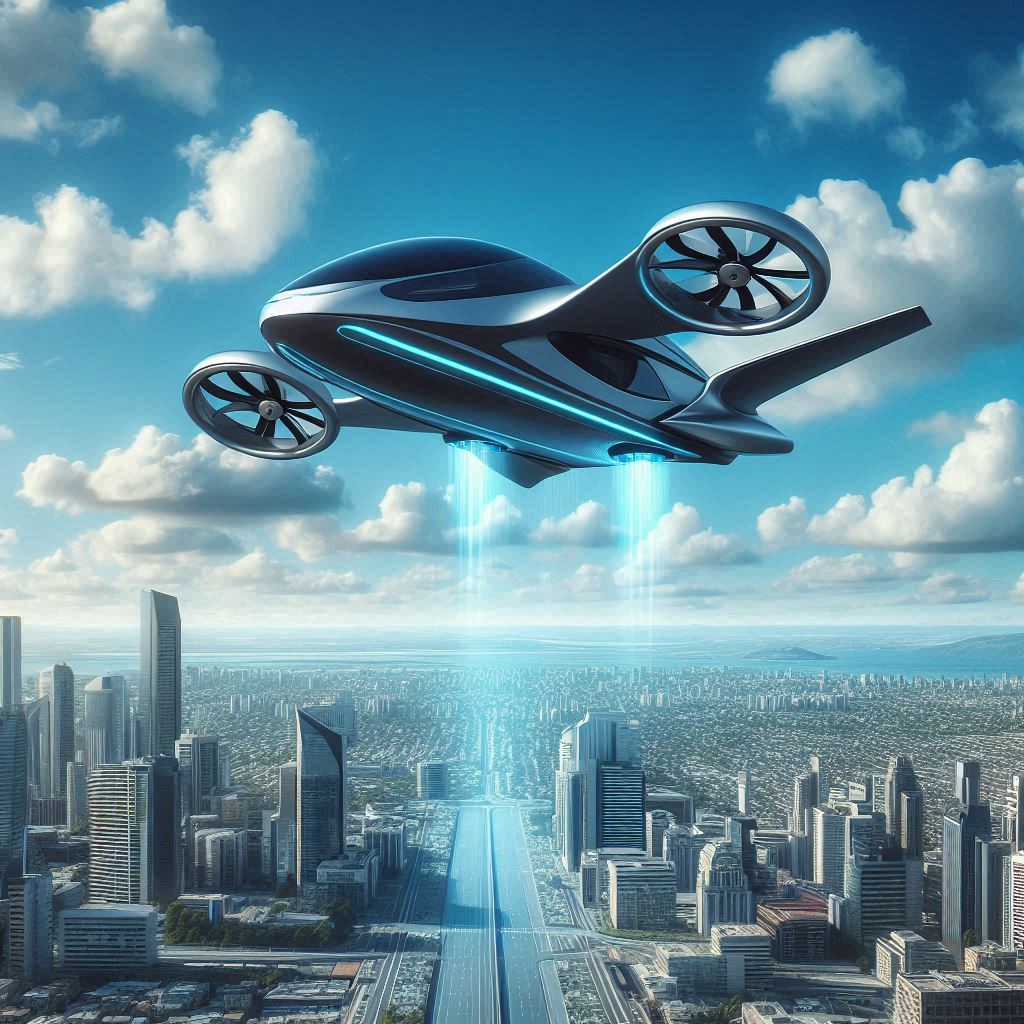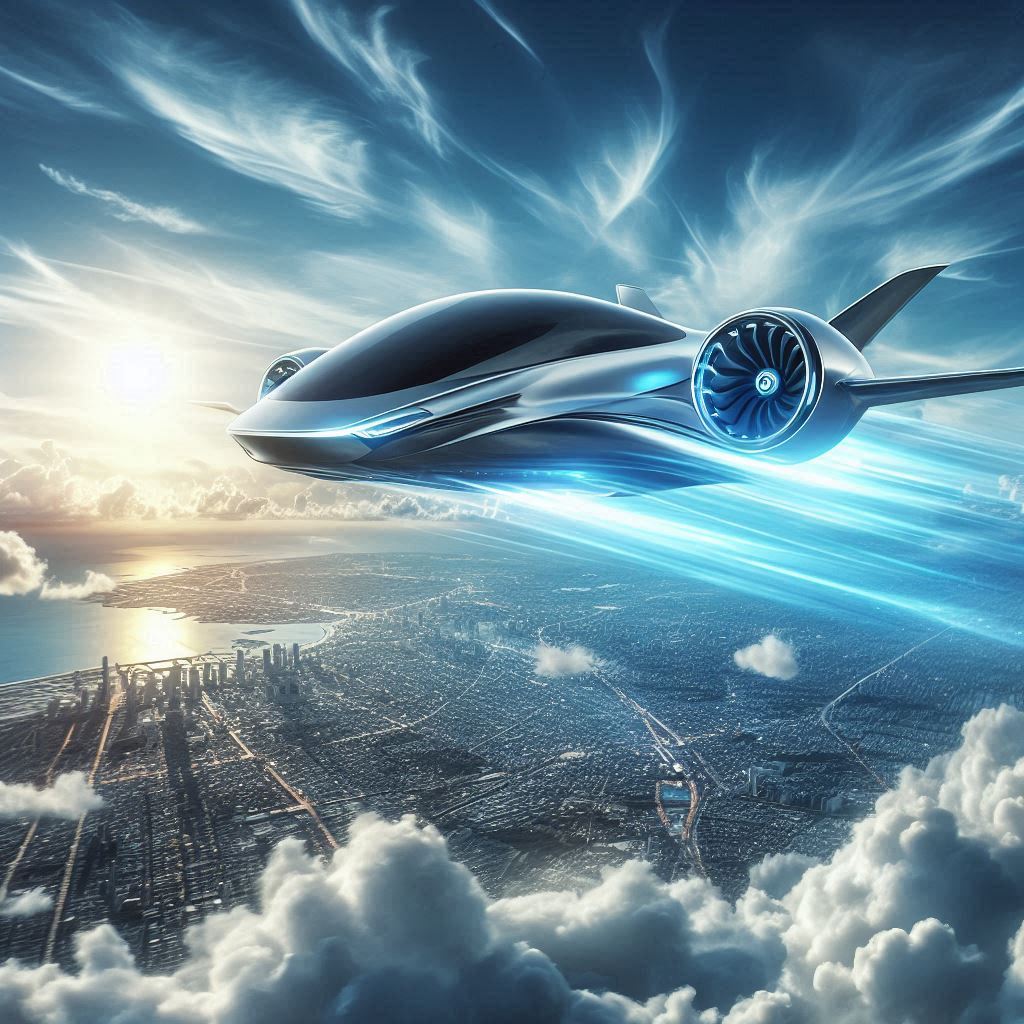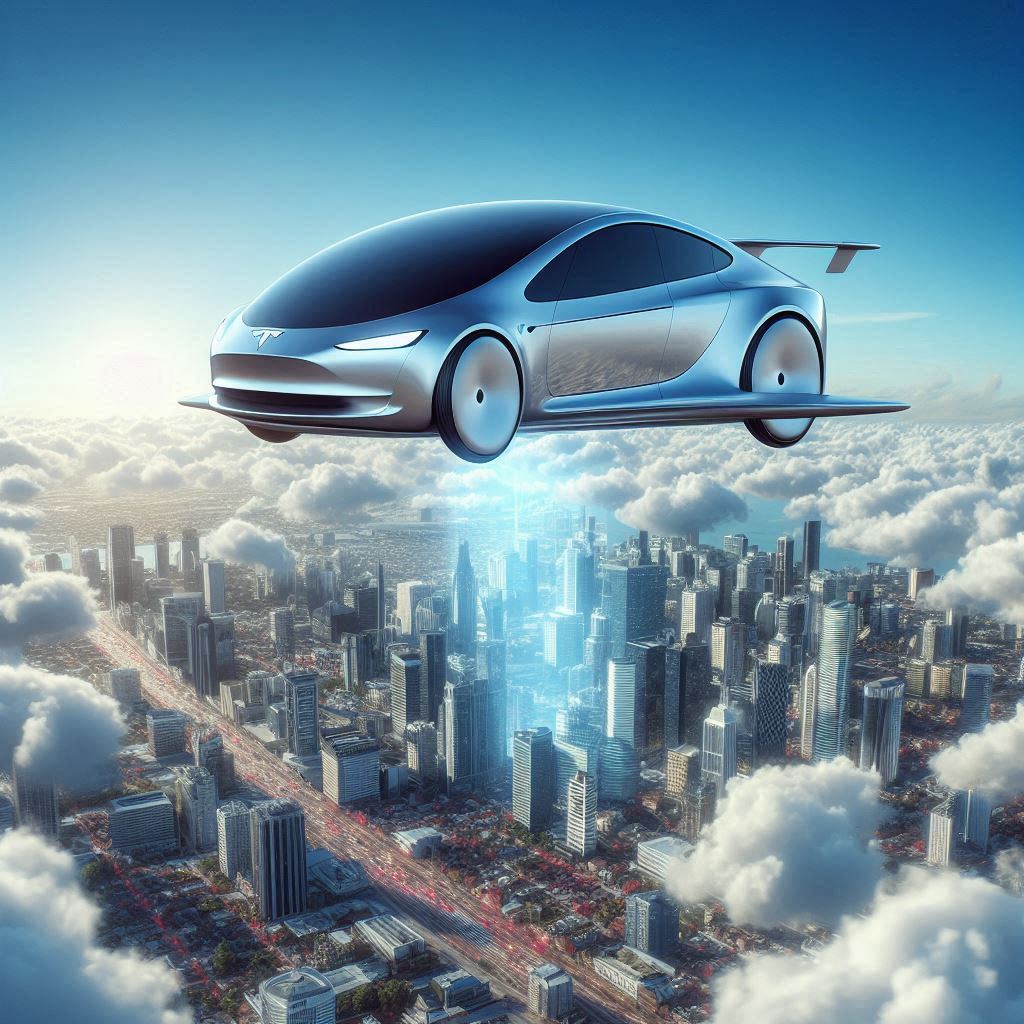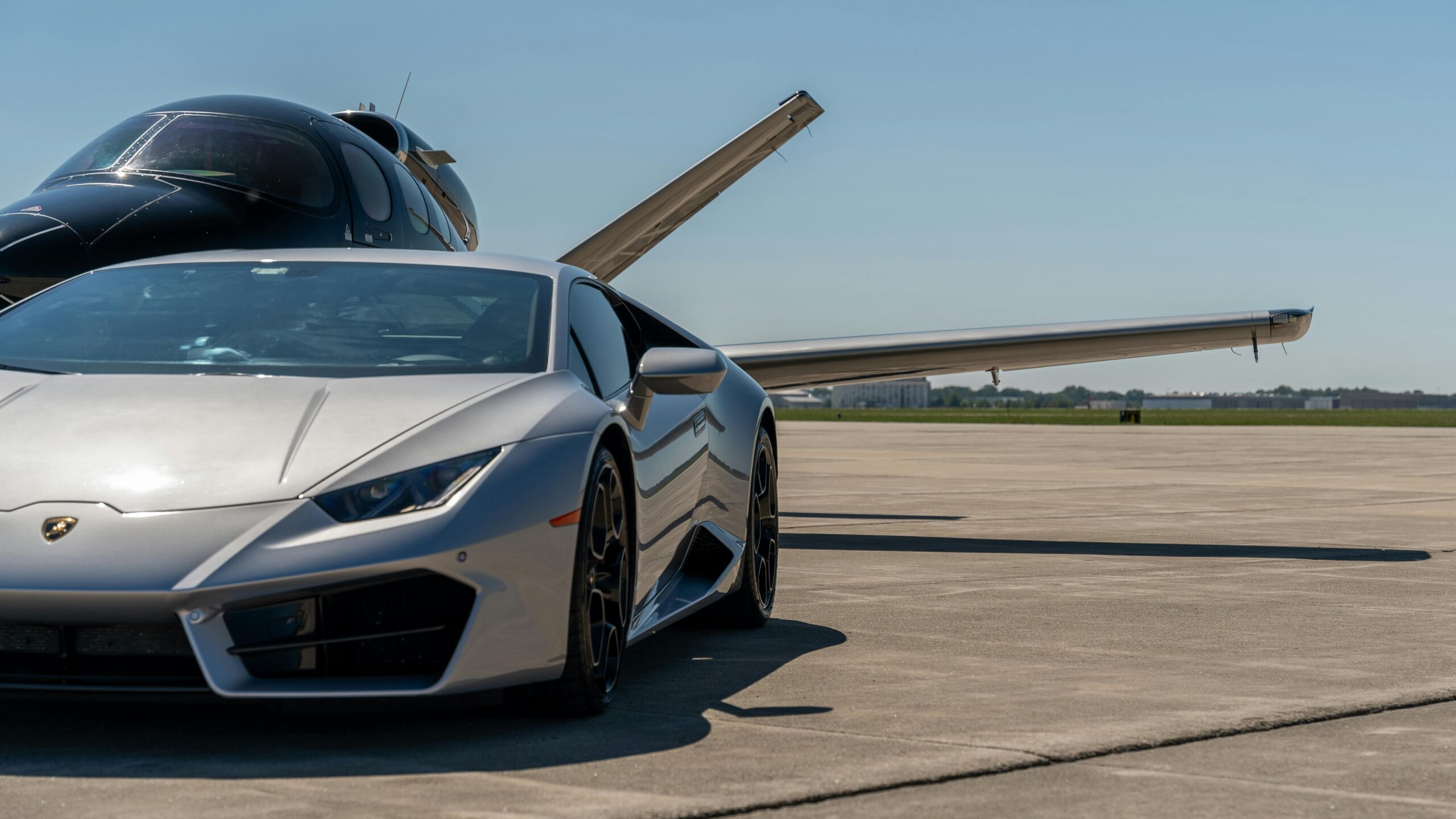The concept of a flying car has fascinated people for decades. Thanks to Elon Musk, this science-fiction dream may be closer than we think. When Musk launched Tesla’s first electric car, he revolutionized the automotive world. Now, with SpaceX’s success in aerospace, Musk is gearing up to do it again — this time by aiming for the skies with a flying Tesla EV.
Recently, in an interview with Don Lemon, Elon Musk hinted at the possibility of Tesla producing a commercially available flying car. This vehicle could reduce road congestion by over 50%, transforming urban mobility forever. Adding to this momentum are executive orders signed by former President Trump, which cut through aviation and EV regulations, paving the way for flying cars to become a reality.
Trump’s Executive Orders: A Tailwind for Tesla’s Flying EV Ambitions
President Trump signed three executive orders designed to accelerate domestic drone production, secure U.S. airspace, and restore American leadership in supersonic and aerial technologies. These orders significantly reduce the regulatory hurdles that have historically slowed aviation innovation.

For Tesla, this is excellent news. The orders support the rapid development and testing of electric vertical takeoff and landing (eVTOL) vehicles — the kind of flying EV Musk envisions. These new policies open doors for practical uses like emergency medical transport, disaster relief in remote areas, and urban air mobility to ease traffic congestion.
Thanks to this clear regulatory pathway and new airspace testing zones, Tesla could be prototyping flying EVs within 12 to 18 months, accelerating the timeline for commercial flying cars. This marks a huge policy shift that fits Tesla’s aerospace strengths perfectly, allowing rapid innovation without the red tape that once hindered progress.
A Brief History of Flying Car Development
Flying car development isn’t new — inventors have been trying to make it work for over a century.
- In the early 1900s, aircraft designer Glenn Curtis created the Autoplane, a three-seat flying car. Although promising, it only managed short hops and never achieved sustained flight.
- In 1936, the Autoro Company of America produced the AC35, more of a roadable aircraft than a car, which could fold its blades and drive on roads at 25 mph.
- After World War II, the Fulton FA2 Amphibian (1946) featured fabric wings that attached to convert it into a plane, powered by a 65 horsepower engine.
- The Aerocar (1949), designed by Moulton Taylor, was one of the first truly practical flying cars with foldable wings that could be converted in 5 minutes. Although approved for mass production, only six were made due to funding issues.
In modern times, companies like Klein Vision have developed flying cars certified for air use. The Klein Vision Air Car can transform from car to aircraft in just over two minutes, cruising at 105 mph and flying over 1,000 km on a single charge. Similarly, Chinese automaker Xpeng unveiled its electric flying car concept, the AeroHT EV Toll, at CES 2024, expected to hit markets by 2030 with a starting price near $142,000.
While progress is promising, flying cars remain mostly prototypes with high price tags, making them currently out of reach for most consumers.
Why Tesla is Poised to Create the First Commercial Flying EV
Tesla’s history of cutting-edge innovation makes it the ideal candidate to pioneer the flying EV market.
Tesla began with the Roadster, sparking the modern electric vehicle race. The company has since raised the bar with luxury models like the Model S and Model X, as well as mass-market vehicles such as the Model 3 and Model Y. Tesla also pushes the envelope with unconventional designs like the Cybertruck and electric Semi truck.
Importantly, Tesla is also advancing fully autonomous driving technology, with its highly anticipated robo-taxi expected to debut soon.
What sets Tesla apart even further is its strong aerospace connection through SpaceX. Elon Musk’s work on reusable rockets and aerospace-grade propulsion technology provides Tesla with an unmatched advantage for building a flying car. Tesla’s extensive gigafactory network and in-house AI and robotics development accelerate its ability to innovate at scale.

What Might Tesla’s Future Flying EV Look Like?
Based on Musk’s interview with Don Lemon, the flying Tesla EV will blend technologies from both Tesla and SpaceX, creating something entirely new.
The design will likely take cues from the Tesla Roadster Gen 2 — sleek, aerodynamic, and fast. Musk has mentioned plans to integrate small rocket thrusters around the vehicle to dramatically improve acceleration, braking, and cornering, and possibly enable limited flight capabilities.
The flying car might feature vertical takeoff and landing (VTOL) capabilities, similar to concepts like the MER Skycar or the foldable-wing design of Klein Vision’s Air Car. It could also adopt a drone-like look with extendable propellers, as seen in Xpeng’s AeroHT EV.
Performance-wise, early indications suggest acceleration from 0 to 60 mph in under one second. The flying car could hover and fly short distances, with Tesla’s advanced autonomous systems handling flight safety and navigation.
The Road Ahead: Challenges and Opportunities
While the prospect of a Tesla flying EV is exciting, some challenges remain:
- Regulatory approval still needs to catch up with fast-moving technology. Although new executive orders help, ongoing government cooperation is essential.
- Pricing is a concern; will flying EVs be affordable for everyday consumers or limited to wealthy early adopters?
- Infrastructure for charging, maintenance, and air traffic management will require development alongside the vehicles themselves.
Tesla’s open-source patent philosophy may help lower costs and accelerate adoption, making flying EVs accessible beyond the elite.
Conclusion: The Future of Transportation is Taking Flight
Tesla’s flying EV has the potential to revolutionize transportation by combining clean energy, aerospace innovation, and autonomous technology in one groundbreaking vehicle. With favorable policies and Musk’s relentless drive, this dream may become reality by 2026.
Imagine a future with no traffic jams, where vertical mobility reshapes cities, and your daily commute could take to the skies.
The question is no longer if flying cars will come, but when — and with Tesla leading the charge, the future looks closer than ever.

FAQs
1. When is Tesla expected to launch its flying electric vehicle (EV)?
Tesla could begin prototyping within 12 to 18 months, with commercial availability potentially by 2026, depending on regulatory approvals and development progress.
2. What makes Tesla’s flying car different from previous flying car attempts?
Tesla combines aerospace-grade propulsion from SpaceX, advanced electric vehicle technology, and AI-powered autonomous driving, setting it apart from earlier flying car prototypes.
3. How will Tesla’s flying EV reduce road congestion?
By enabling vertical takeoff and landing and airborne travel, Tesla’s flying EV could cut road traffic by at least 50%, easing urban congestion significantly.
4. What role do recent government policies play in Tesla’s flying car development?
Executive orders signed by President Trump have streamlined aviation and EV regulations, providing Tesla a clear legal and testing framework to develop flying EVs faster.
5. Will Tesla’s flying car be fully autonomous?
Tesla is aiming for fully autonomous flight capabilities, leveraging its expertise in self-driving technology to make flying EVs safe and efficient.
6. How fast will Tesla’s flying car accelerate?
The flying Tesla Roadster could accelerate from 0 to 60 mph in less than 1 second, making acceleration one of its most exciting features.
7. How long can Tesla’s flying EV fly on a single charge?
Exact flight range details are not yet public, but it will likely offer a range competitive with existing EVs, potentially enhanced by aerospace-grade battery tech.
8. Will Tesla’s flying EV have vertical takeoff and landing (VTOL) capabilities?
Yes, Tesla’s flying EV is expected to feature VTOL technology, enabling it to take off and land vertically like a drone or helicopter.
9. How will Tesla’s flying car handle safety?
Tesla will leverage its AI, sensors, and autonomous software to create redundant safety systems for both road and flight modes.
10. What kind of infrastructure is needed for flying EVs?
New air traffic management systems, urban landing pads, charging stations, and maintenance facilities will be required to support flying EV operations.
11. How much will Tesla’s flying car cost?
Prices are not confirmed but, based on current flying car prototypes, the initial price could be high — possibly over $100,000 — before economies of scale bring prices down.
12. Will Tesla open-source the flying car technology?
Elon Musk has suggested Tesla will open-source key patents to encourage mass adoption and accelerate innovation.
13. What challenges remain for flying cars to become mainstream?
Regulatory approvals, air traffic control, infrastructure development, affordability, and public acceptance are major challenges ahead.
14. How will Tesla’s flying EV impact the environment?
Being fully electric, Tesla’s flying car will produce zero emissions during operation, potentially reducing overall urban pollution compared to traditional vehicles.
Read More:
- Elon Musk LEAKS 2025 Tesla Bot Gen 3 Full Version! 1,000+ Homemaker Skills & 100x Faster Gen 2
- SpaceX Found Brilliant Solution for Starship Pez Dispenser Door Open in Orbit
- End of ULA! SpaceX Demolished ULA Launch Pad for Massive Starship Launch
- Elon Musk’s 2026 Tesla Model 2 Just Ended Affordable EV War. What Makes It A Game-Changer?
- Tesla Robotaxis are becoming a common sight on Austin’s public roads

